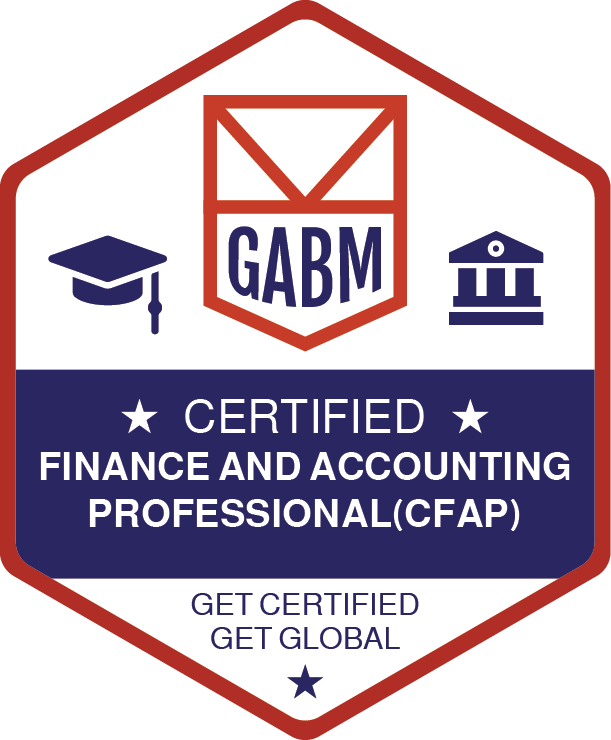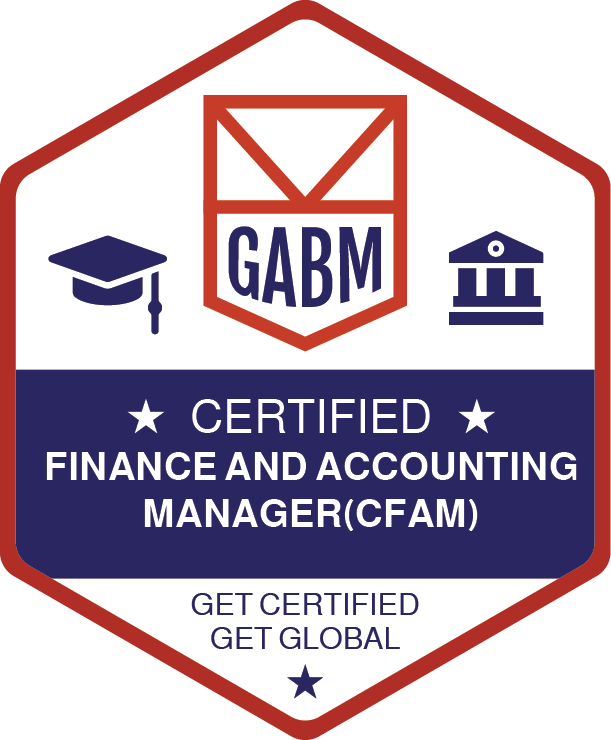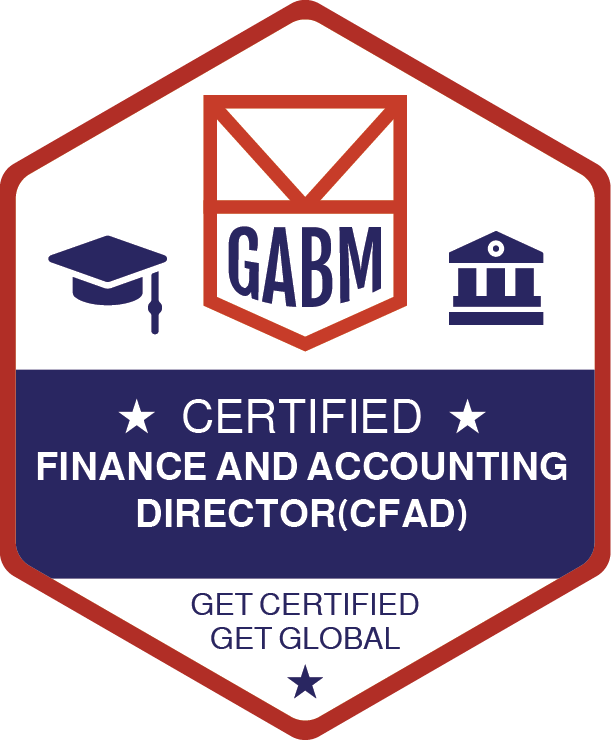This course in Financial and Accounting Management will provide you with the practical proficiencies and knowledge you need to succeed in a career in business. You will develop competencies in innovative and creative problem solving, critical thinking and strategic reasoning.
This course is designed for students who seek a career as an accountant or financial executive in industry, commerce or the public sector or who want to become a management consultant.

Programme Aims
The Programme aims to provide students with the knowledge and skills to equip them for a career in a diverse range of business organization. It will develop students’ competence to apply a range of financial and accounting skills to the practice of financial management an develop the critical and analytical abilities of students in relation to financial management.
Furthermore, students will develop critical, analytical and problem based learning and transferable skills to prepare them for postgraduate employment. Finally, the programme aims to develop students’ ability to undertake academically rigorous independent research and enhance, arguments and research findings effectively in written form.
Graduate Qualifications
- Graduate Certificate in Financial and Accounting Management
- Graduate Diploma in Financial and Accounting Management
Designation Qualifications
- Certified Financial and Accounting Professional (CFAP)
- Certified Financial and Accounting Manager (CFAM)
- Certified Financial and Accounting Director (CFAD)





Awards are conferred in accordance with the GABM General and Academic Regulations for Students and the GABM Postgraduate Programme Assessment, Progression and Award Regulations.
Graduate Certificate in
Financial and Accounting Management
Indian Rupees
Indian Nationals
12,999/-
US Dollars
International
Students
200$
Complete Learning Pack
4-6 Months Access
Graduate Diploma in
Financial and Accounting Management
Indian Rupees
Indian Nationals
14,999/-
US Dollars
International
Students
250$
Complete Learning Pack
4-6 Months Access
Certified Professional in
Financial and Accounting Management
Indian Rupees
Indian Nationals
14,999/-
US Dollars
International
Students
250$
Complete Learning Pack
4-6 Months Access
Certified Manager in
Financial and Accounting Management
Indian Rupees
Indian Nationals
18,999/-
US Dollars
International
Students
300$
Complete Learning Pack
4-6 Months Access
Certified Director in
Financial and Accounting Management
Indian Rupees
Indian Nationals
29,999/-
US Dollars
International
Students
350$
Complete Learning Pack
4-6 Months Access
Entry requirements
Entrants to this programme are normally required to have attained the following.
- Applicants should either have at least Secondary school or entry to bachelor degree for
Graduate certificate - Students who have completed bachelor degree / fresher or final year students can apply for
Graduate diploma. - Students who have completed bachelor degree / fresher or final year students can apply for
professional certificate. - Bachelor degree with 2 years’ experience for Managerial certificate.
- Bachelor degree with 2 years’ experience for Managerial certificate.
- Bachelor degree with 5 years’ experience for Director Certificate.
- A good honors degree or equivalent in a relevant subject or and work experience in relevant
management or other related field.
Career Prospect
This course is an excellent preparation for a financial career in banking, insurance, pensions, privatization and funds management. Our students can gain employment in areas such as corporate finance, financial analysis, credit analysis, commercial lending, financial consulting, risk management and investment banking.
Who Should Attend
The financial and accounting management is designed for professionals based anywhere in the world who are looking to build knowledge and skills in finance.
It is ideal for you,
- Have no finance experience and seek a career change into the financial services sector.
- Need to build more substantial skills and knowledge in finance to further your career (i.e. any sector)
Are looking to build on existing finance experience to progress your career in financial services. ( or related industry)
Learning and Training Methods
The Strategic and Leadership management programme uses a number of different assessment techniques that will allow you to demonstrate your understanding of concepts and issues covered. These may be broadly categorized as ‘coursework’ which may be in the form of individual or group assignments, practical problem-solving exercises and presentations.
It should be emphasized that the purpose of assessment is not only grade you, and provide information to facilitate management of the course, but also to provide feedback to you. In this manage it accordingly. You should keep all the returned assessment work in a file as you may have to submit this at the end of the programme for the academy to assess.
Individual model leaders will distribute information on the methods of assessment used, and their weighing at the start of each module.
Programme Curriculam MAP
|
Module / Description |
Graduate Certificate |
Graduate Diploma |
Certified Financial Professional |
Certified Financial Manager |
Certified Financial Director |
|---|---|---|---|---|---|
| Introduction to Accounting | |||||
| A systematic approach to financial reporting: The accounting equation | |||||
| Financial statements from the accounting equation | |||||
| Ensuring the quality of financial statements | |||||
| Accounting information for service business | |||||
| Accounting information for trading business | |||||
| Published financial statements | |||||
| Non-current (Fixed) assets | |||||
| Current Assets | |||||
| Current Liabilities | |||||
| Ownership Interest | |||||
| Ratio Analysis | |||||
| Functions of Management accounting | |||||
| Classification of costs | |||||
| Product cost: Material, Labor and overheads | |||||
| Breakdown Analysis and short-term decision making | |||||
| Preparing a budget | |||||
| Standard costs | |||||
| Assignments | |||||
| Project Report – 100 Points | |||||
| Credit Points |
200 |
300 |
400 |
400 |
460 |
Modules
- Introduction
- The development of a conceptual framework
- The conceptual framework for financial reporting
- Types of business entity
- Users and their information needs
- General purpose or specific purpose of financial statement
- Stewards and agents
- Who needs financial statements
- Introduction to the terminology of business transaction
- Introduction
- The accounting equation
- Defining assets
- Examples of assets
- Recognition of assets
- Defining liabilities
- Examples of liabilities
- Recognition of liabilities
- Defining the ownership interest
- Recognition of ownership interests
- Changes in ownership interest
- Revenue and expenses
- Introduction
- Who is in charge of accounting system
- The accounting period
- The statement of financial position (balance sheet)
- The income statement (profit and loss account)
- The statement of cashflow
- Usefulness of financial statement
- Using the accounting equation to analyze transaction
- Introduction
- Qualitative characteristics of financial statements
- Relevance
- Faithfull representation
- Materiality
- Enhancing qualitative characteristics
- Cost constraint on useful financial reporting
- Other characteristics of financial information
- Going concern
- Accruals (also called matching)
- Consistency
- Prudence
- Realization
- Views on Prudence
- Regulation of financial reporting
- The IAS regulation
- UK Company law
- The financial reporting council
- Corporate governance
- Stock exchange regulation
- Auditors
- The tax system
- Is regulation necessary
- Reviewing published financial statements
- Income statement (profit and loss account)
- Statement of financial position (balance sheet)
- Statement of cash flow
- Introduction
- Analyzing transactions using the accounting eqution
- Illustration of accounting for a service business
- A process for summarizing the transaction: a spreadsheet
- Financial statements as a means of communication
- Statements of cashflows
- Income statement (profit and loss account)
- Statement of financial position (balance sheet)
- Recording transactions in ledger account – a service business
- Analyzing the debit and credit entries for each transaction
- Form of ledger accounts
- Introduction
- Goods purchased for resale
- Analysis of transaction
- Analysis of transactions and events
- Spreadsheets summarizing the transactions
- Manufacturing goods for resale
- Illustrator of accounting for a trading business
- Explanation of the analysis of each transaction
- A process for summarizing the transactions: a spreadsheet
- Introduction
- International influences
- The European union
- Accounting framework
- Formats of financial statements
- Categories of financial statements
- Notes and accompanying information
- Statements of financial position (balance sheet)
- Income statement (profit and loss account)
- Statements of cash flows
- Group structures of companies
- Group financial statements
- Small and medium sized entities.
- Introduction
- Definitions
- Examples of non-current (fixed) assets
- Cost of non-current (fixed) assets
- Repair and improvements
- Recognition
- Tangible non-current fixed assets
- Intangible non-current fixed assets
- Investments
- User needs information
- Information provided in the financial statements
- Usefulness of published information
- Depreciation: an explanation of its nature
- Retaining cash in the business
- Reporting non-current (fixed) assets and depreciation in financial statements
- Disposing of the non-current (fixed) assets
- Introduction
- Definitions
- The working capital cycle
- Recognition
- Inventories
- Receivables (debtors) and prepayments
- Investments
- Cash
- User needs informationt
- Information provided in the financial statements
- Measurement and recording
- Inventories (stocks) of raw materials and finished goods
- Lower of cost and net realizable value
- Measuring of cost
- Cost when input prices are changing
- Receivables (debtors)
- Change in a provision
- Prepayments
- Revenue recognition
- Contract revenue
- Introduction
- Definitions
- Recognition
- Risk of understatement of liabilities
- Non-recognition: Contingent liabilities
- Changing thoughts of contingencies
- User needs information
- Information provided in the financial statements
- Measurement and recording
- Bank overdraft finance
- Trade payables (trade creditors)
- Accruals and the matching concept
- The distinction between the expenses of the period and the cash paid
- Accruals where no invoice has been received
- The nature of estimates in accounting
- Liabilities for taxation
- Corporation tax
- Deferred taxation liability
- Introduction
- Definition and recognition
- Presentation of ownership interest
- Buying and selling shares
- Issue of further shares after incorporation
- Retained earnings
- Statement of comprehensive income
- Revaluation of non-current (fixed) assets.
- Changes in exchange rates of foreign currency
- Statement of changes in equity
- User needs information
- Information provided in the financial statements
- Share capital
- Share premium
- Revaluation reserve
- Dividends
- Issues of further shares on the stock market.
- Introduction
- Systematic approach to ratio analysis
- Investors views on risk and return
- Pyramid of ratios
- Use of limitations of ratio analysis
- Worked examples of ratio analysis
- Linking ratios to the statement of cash flow
- Combining ratios for interpretation
- Introduction
- Applying the definition
- Matching the approach to the judgements or decisions
- Strategic management accounting
- Meeting the needs of internal users
- Management functions
- Role of management accounting
- The language of management accounting
- Definition of a cost
- The need for cost classification
- The meaning of activity and output
- Variable costs and fixed costs
- Direct and indirect costss
- Product costs and period costs
- Cost classification for planning decision making and control
- Cost coding
- Cost selection and reporting
- Introduction
- Accounting for materials costs
- Material s handling and control documentation
- Material costs when input prices are changing
- Costs of wastage and scrap
- Cost classification and materials costs
- Accounting for labor costs
- Production overheads: traditional approach
- Predetermined overhead cost rates
- Under recovery and over recovery of overheads
- Activity based costing (ABC) for production overheads
- Comparing the traditional approach and ABC
- Introduction
- Cost behavior: fixed and variable costs
- Break-even analysis
- Calculating the break-even point
- Break-even chart
- Profit-volume graph
- Using break-even analysis
- Covering fixed costs and making a profit
- Beyond the break-even point
- Margin of safety
- Change in selling price
- Change in variable cost
- Change in fixed cost
- Limitations of break-even analysis
- Applications of cost-volume profit analysis
- Special order to use up space capacity
- Pricing decisions
- Introduction
- Purpose and nature of budget systems
- Long range planning
- Strategy
- Budgets
- Administration of the budgetary process
- The benefits of budgeting
- Behavioral aspects of budgeting
- Approaches to budgeting
- Shorter budget periods.
- Introduction
- Purpose of using standard costs
- The level of output to be used in setting standards
- The control process
- Direct material cost variance
- Direct labor cost variance
- Variable overhead cost variance
- Fixed overhead expenditure variance
- Investigating variances
- Flexible budget and variance analysis
- A broader view of applications of variance analysis
Programme Structure
| Module Code | Module | Core/Elective | Credit Points |
|---|---|---|---|
| FAM-101 | Introduction to Accounting | Core | 20 |
| FAM-102 | A systematic approach to financial reporting: The accounting equation | Core | 20 |
| FAM-103 | Financial statements from the accounting equation | Core | 20 |
| FAM-104 | Ensuring the quality of financial statements | Elective | 20 |
| FAM-105 | Accounting information for service business | Core | 20 |
| FAM-106 | Accounting information for trading business | Core | 20 |
| FAM-107 | Published financial statements | Elective | 20 |
| FAM-108 | Non-current (Fixed) assets | Core | 20 |
| FAM-109 | Current Assets | Core | 20 |
| FAM-110 | Current Liabilities | Core | 20 |
| FAM-111 | Ownership Interest | Elective | 20 |
| FAM-112 | Ratio Analysis | Core | 20 |
| FAM-113 | Functions of Management accounting | Elective | 20 |
| FAM-114 | Classification of costs | Core | 20 |
| FAM-115 | Product cost: Material, Labor and overheads | Core | 20 |
| FAM-116 | Breakdown Analysis and short-term decision making | Core | 20 |
| FAM-117 | Preparing a budget | Elective | 20 |
| FAM-118 | Standard costs | Elective | 20 |
| Distinctive features of the Programme | |||
|
|||
Assessment Pattern
The GABM global academy consists of variety of assessment modes.
- Assessed assignments ( in essay , report, problem, case studies or short question format)
- Written examination papers.
- Project report submission.
The exact combination of assessment varies from programme to programme and from module to module.
| Programme | Assessment pattern | Credit Points |
|---|---|---|
| Graduate certificate in Finance and Accounting Management |
1 Assignment | 200 |
| Graduate Diploma in Finance and Accounting Management |
2 Assignment | 300 |
| Certified Finanace and Accounting Professional (CCP) |
3 Assignment | 400 |
| Certified Finanace and Accounting Manager (CFAM) |
3 Assignments with project report | 460 |
| Certified Finanace and Accounting Director (CFAD) |
3 Assignments with project report | 460 |
Note: Assignments and patterns are subject to change without notice; candidates are required to contact office of executive education and professional certification of the academy for respective programme before start of the course.

